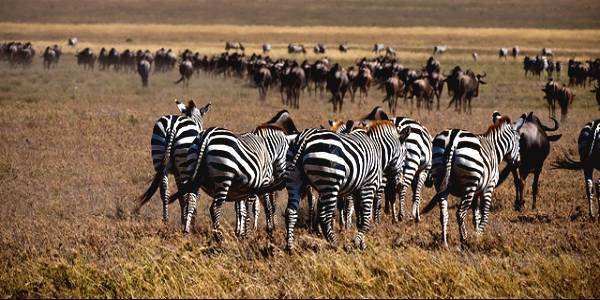A population of zebras has just secured the number one spot as Africa’s longest terrestrial wildlife migration, hoofing it more than 300 miles (500 kilometers) round-trip between Namibia and Botswana.
Researchers from the World Wildlife Fund (WWF) and the Ministry of Environment and Tourism (MET) in Namibia made the discovery using GPS collars attached to eight adult Plain zebra (Equus quagga). Published in the latest issue of the journal Oryx, this revelation provides compelling evidence that conservation efforts often require multi-national coordinated support, Discovery News reported.
The great zebra migration has been disturbed by human activity, such as fences, throughout the years.
“This unexpected discovery of endurance in an age dominated by humans, where we think we know most everything about the natural world, underscores the importance of continued science and research for conservation” Doctor Robin Naidoo, senior conservation scientist at WWF, said in the news release.
This new research could help aid in zebra conservation efforts.
The migration takes place without using the Kavango Zambezi Transfrontier Conservation Area (KAZA), which is the “the world’s largest multi-country conservation area,” the news release reported. The region spans 109 million acres across “Namibia, Botswana, Zimbabwe, Zambia and Angola,” the news release reported. This area could be key in protecting the future of mammal land migrations.
“The findings of this study emphasize the importance of trans-frontier conservation areas in conservation of the greater landscape” Pierre Du Preez, Chief Conservation Scientist at MET in Namibia, said in the news release. “This study has played a crucial role in helping determine a key wildlife corridor in KAZA.”
“At a time when conservation news is inherently rather negative, the discovery of this unknown natural phenomenon should resonate with people around the world. The government’s commitment to secure key migratory corridors serves to underpin the growing wildlife tourism industry. We plan to continue monitoring the migration to try and conserve such increasingly rare natural events,” Doctor Mike Chase, EWB’s founder, said in the news release.
Agencies/Canadajournal
 Canada Journal – News of the World Articles and videos to bring you the biggest Canadian news stories from across the country every day
Canada Journal – News of the World Articles and videos to bring you the biggest Canadian news stories from across the country every day



